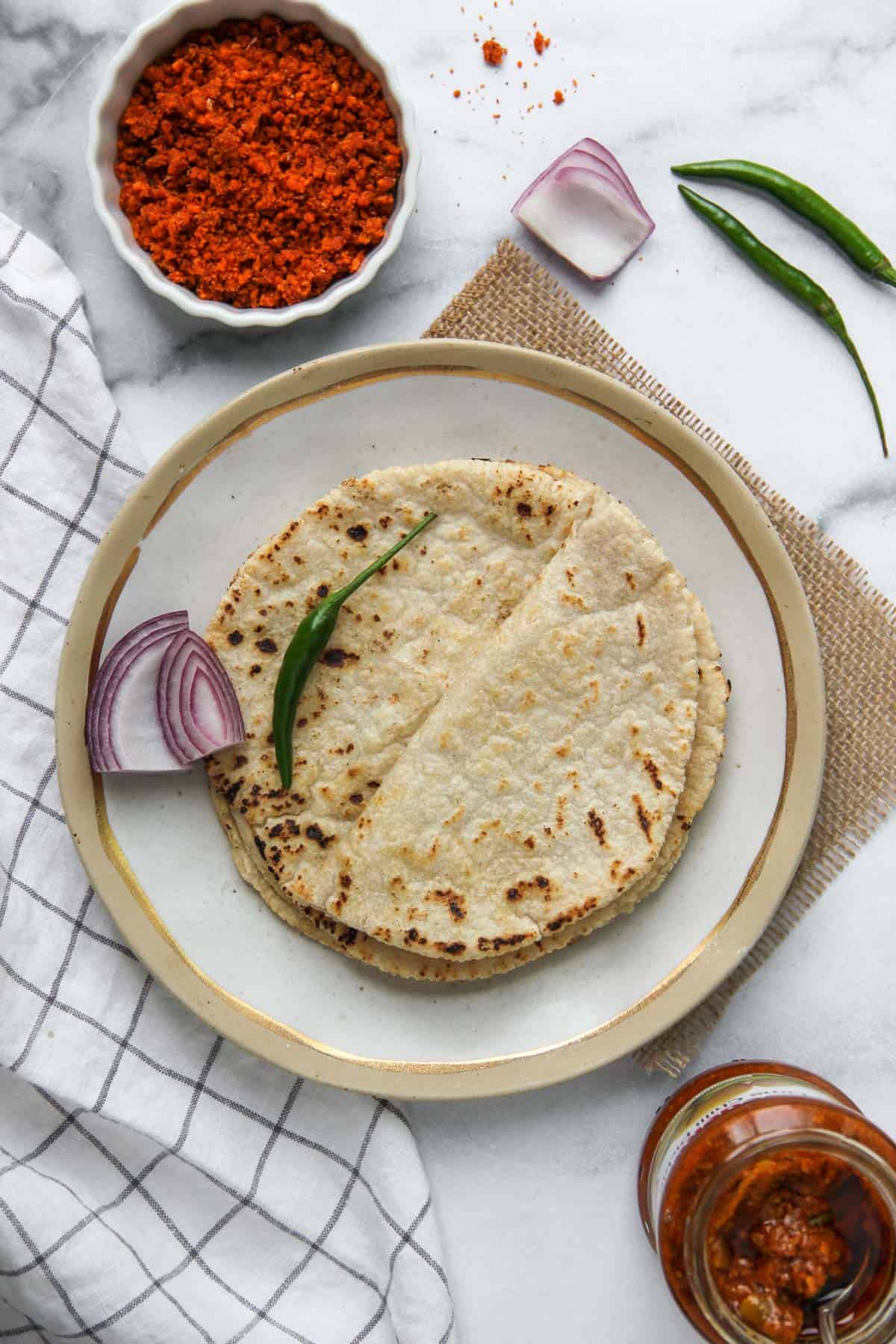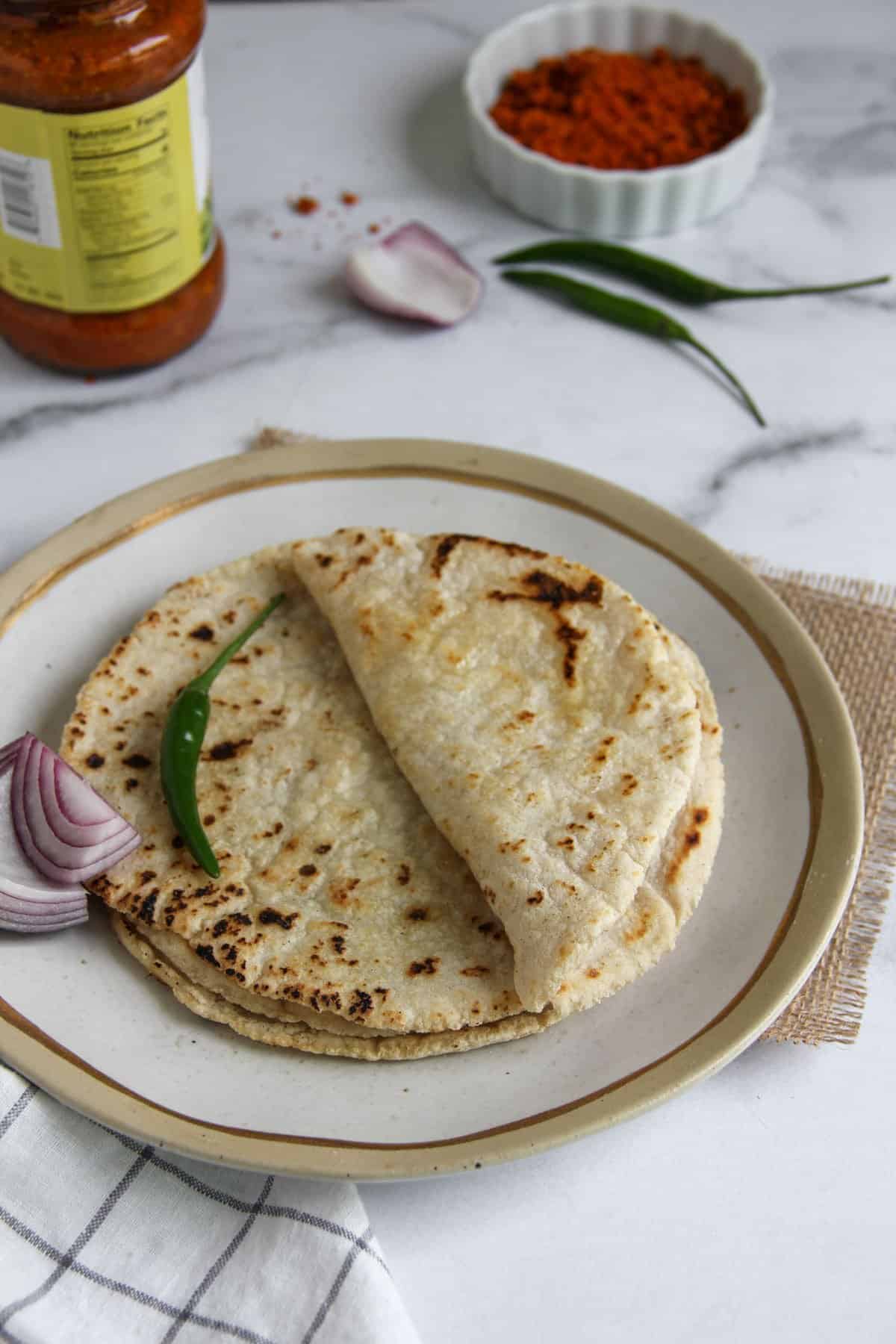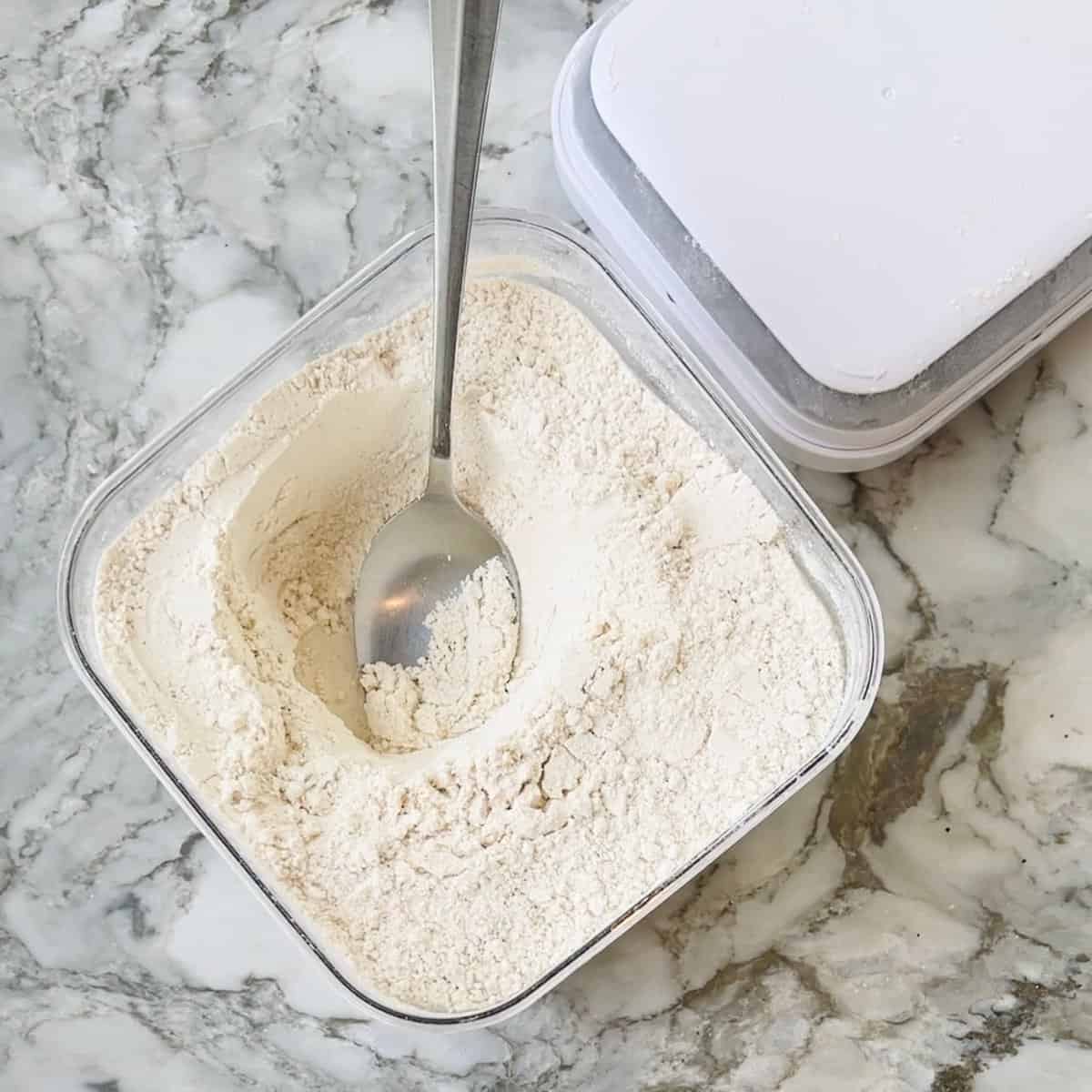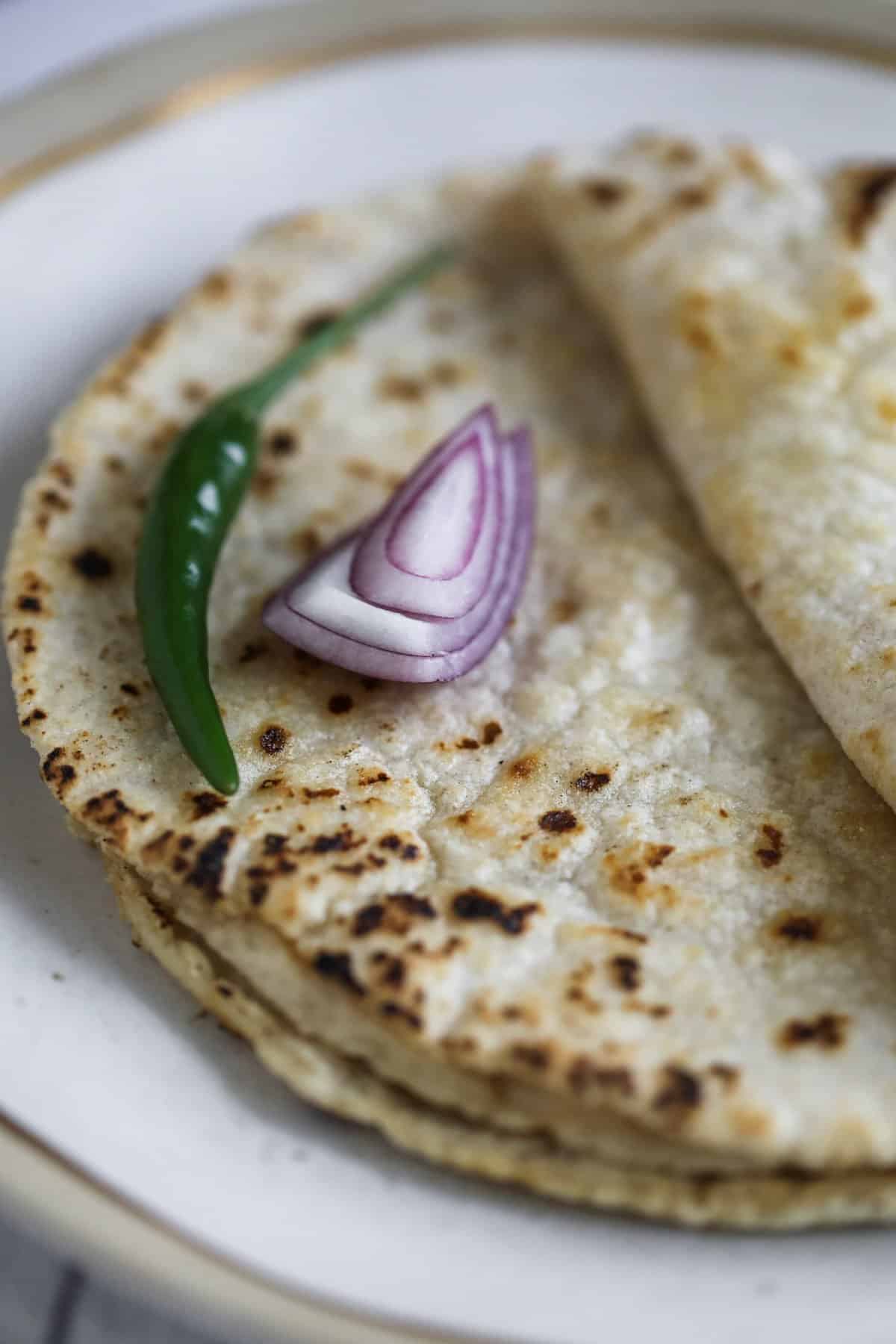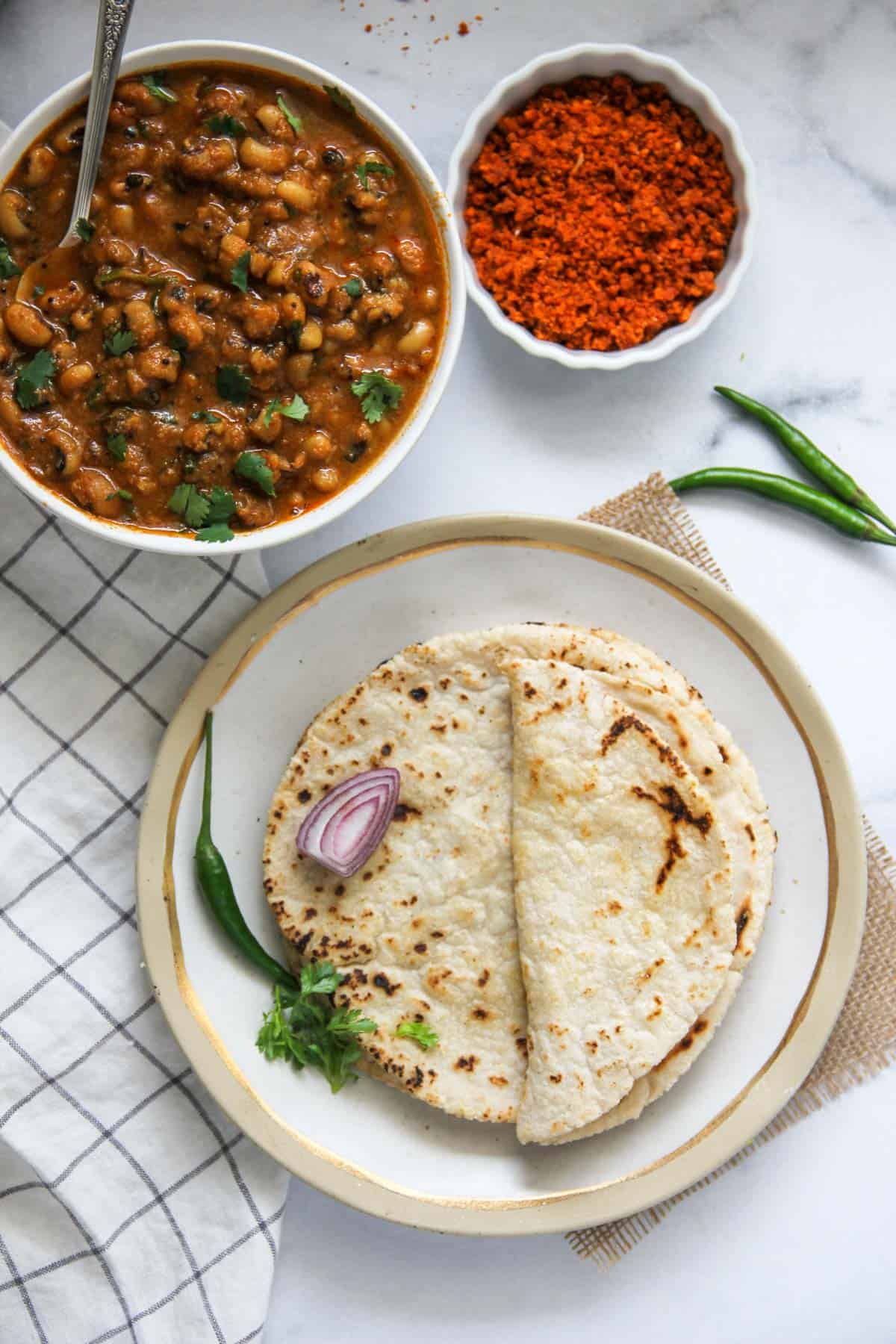What is Jowar Roti?
Jowar Roti or Jowar Bhakri is a staple in the Indian states of Maharashtra, Gujarat, and Karnataka. Sorghum is a versatile and nutrient-rich grain. In Maharashtra where I grew up, it is called Jwarichi Bhakri (sorghum roti). Most nights, we enjoyed “Garam Garam Bhakri” (hot- hot roti) with curries, dals, and sometimes with special gram-flour curries like Pithla or Patwai Rassa. Enter your email & I’ll send it to your inbox. Plus, get great new recipes from me every week! By submitting this form, you consent to receive emails from Minstry of Curry Traditionally, the dough for the Jowar Roti is made by kneading sorghum flour with warm water. Small dough balls are pressed by hand to form thin roti. These Rotis are then cooked partially on a pan and are finished cooking on direct flame. If you love Indian cuisine, you have to explore the Indian bread recipes! Start with the classic Indian roti recipe for a perfectly soft and fluffy bread that pairs well with any curry. Don’t miss out on trying Bajra roti, a gluten-free and hearty flatbread made with pearl millet flour, offering a delightful twist to your meal.
Ingredients
These unleavened flatbreads need just 2 ingredients - sorghum flour and salt. The key to making the best Jowar Bhakri is getting freshly milled Sorghum flour which is not easy here in the US. Over the years I have tried a few different store-bought flours. Here are 3 brands that I like - Jalsa Foods Dadar Goti Juwar Flour, Jalpur, and Swad. One of my Instagram readers also recommended Sohum Brand Jowar Flour.
Jowar Roti with Store-Bought Flour
Traditionally in India, Jowar Bhakri is made with freshly ground flour that is kneaded with warm water. My version using store-bought Jowar flour is very close to the authentic recipe with a few modifications that result in fail-proof roti:
How to make Jowar Roti
In a medium pot, bring water to a gentle boil. Add salt and flour to it Mix the batter and turn the heat off. Mix well and keep covered for 5 minutes Transfer the dough to a mixing bowl Knead the dough well until it turns into a smooth ball
Divide the dough into 4 parts and shape each into a round ball kneading it well Cover with a damp paper towel. Preheat the pan to low-medium heat Take one dough ball at a time and roll it in dry flour coating it evenly Place it on parchment paper and roll it evenly into a 6-inch circle
Carefully transfer the Roti onto the preheated pan Using a silicone brush, apply a little water to the Roti. Once the water has dried up, using a flat spatula carefully flip the Roti Cook the bottom side for 3 to 4 minutes or until it’s fully cooked with light golden spots on the bottom side Next, flip the Roti again either on the pan or directly on the flame. The Roti should start to puff up. If cooking on a pan, apply gentle pressure with a clean kitchen towel to help it puff up nicely. Take the roti out once both sides have light brown spots
Apply ghee on top or skip ghee for vegan Rotis Continue rolling and cooking the remaining dough balls
Tips to make perfect Jowar Rotis
If using store-bought flour use one of the recommended brands - Jalsa Foods Dadar Goti Juwar Flour, Sohum, Jalpur, or Swad If the flour is old, add 1 to 2 tablespoons of rice flour to it Using hot boiling water to make the dough will result in fail-proof roti, especially when using store-bought flour Although traditionally Rotis are pressed and shaped by hand, using a rolling pin helps make thin roti with even thickness If the roti starts to crack while rolling, knead the dough ball again with a little bit of water Roll the Roti on parchment paper so it’s easy to pick up and transfer onto the hot pan Using a silicone brush helps spread a thin layer of water without burning your hands If you are new to making roti, finish cooking the last side of the Roti on the pan itself. Press down gently with a kitchen towel to allow the Roti to puff up and cook evenly Stacking Rotis on top of one another and covering them with paper towels or a kitchen towel will keep them soft
What to Serve With Jowar Roti
Jowar Rotis can be served with curries and dals alongside dry chutneys or pickles. Some of my favorite dishes to serve with these Bhakri are black-eyed peas curry, Thecha chutney, chicken curry, and spinach dal. In Maharashtra, Pithla-Bhakri is a popular meal. “Pithla” is a spicy dish made with gram flour that pairs perfectly with these Rotis.
How to Store Jowar Roti
Freshly made Jowar Roti’s can be served hot, warm, or even at room temperature. Leftover Rotis can be refrigerated in an air-tight container for 2 to 3 days. To reheat, simply place the roti on a preheated pan and cook for 2 to 3 minutes.
More Indian Bread Recipes
Masoor Dal Chilla Mung Dal Chill Plain Parathas Puri Kale Parathas Methi Thepla
Recipe


